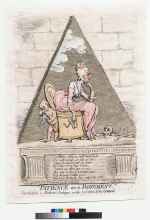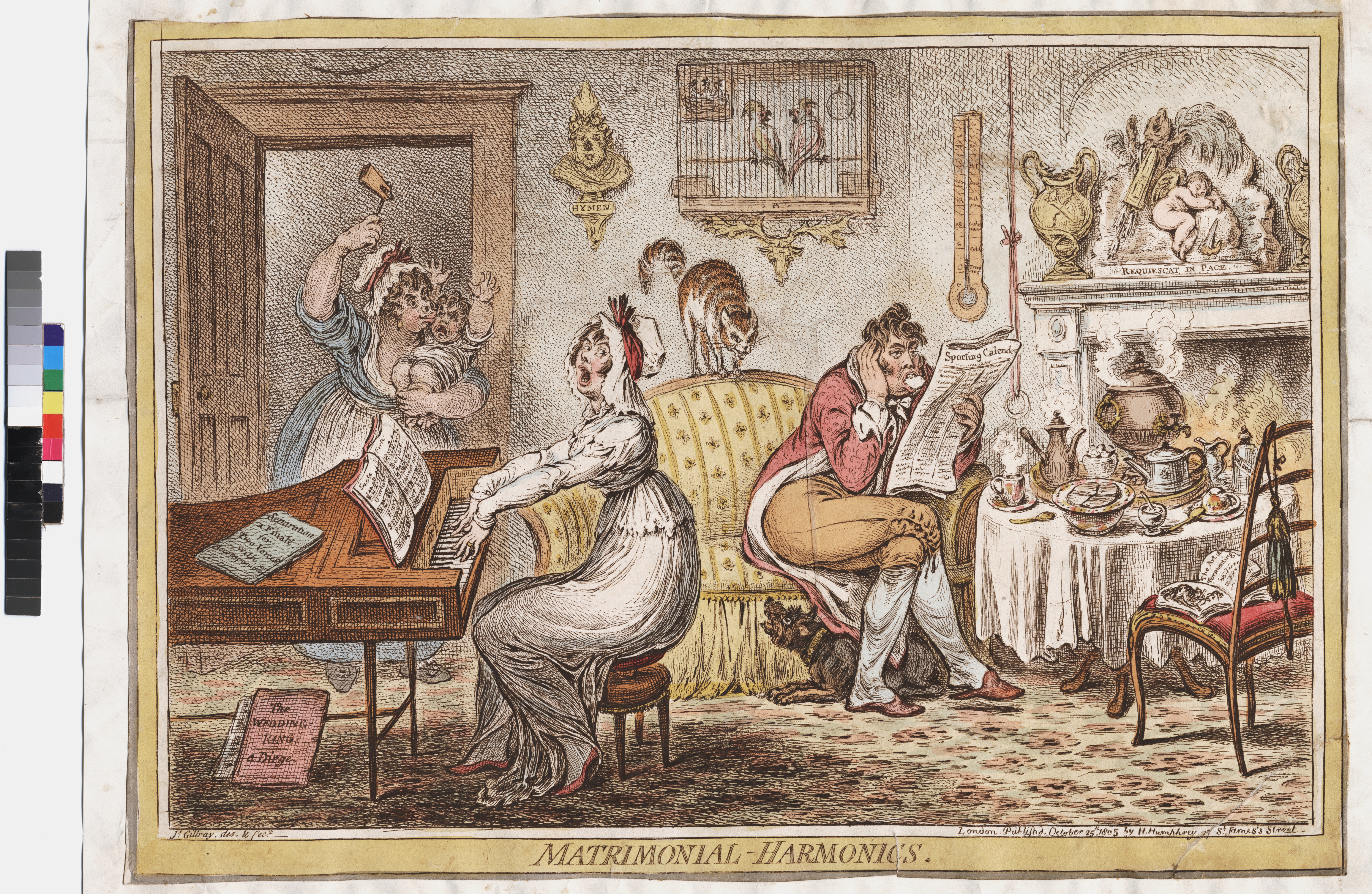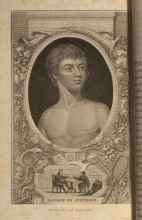The Fashionable Mamma,—or—the Convenience of Modern Dress
A viscountess sits between a portrait of a peasant woman breastfeeding a baby, the frame of which reads “Maternal Love," and a window revealing a carriage waiting outside, its attendant holding its door open. The viscountess wears a loosely fitting polka-dot dress and a large feather headpiece.










